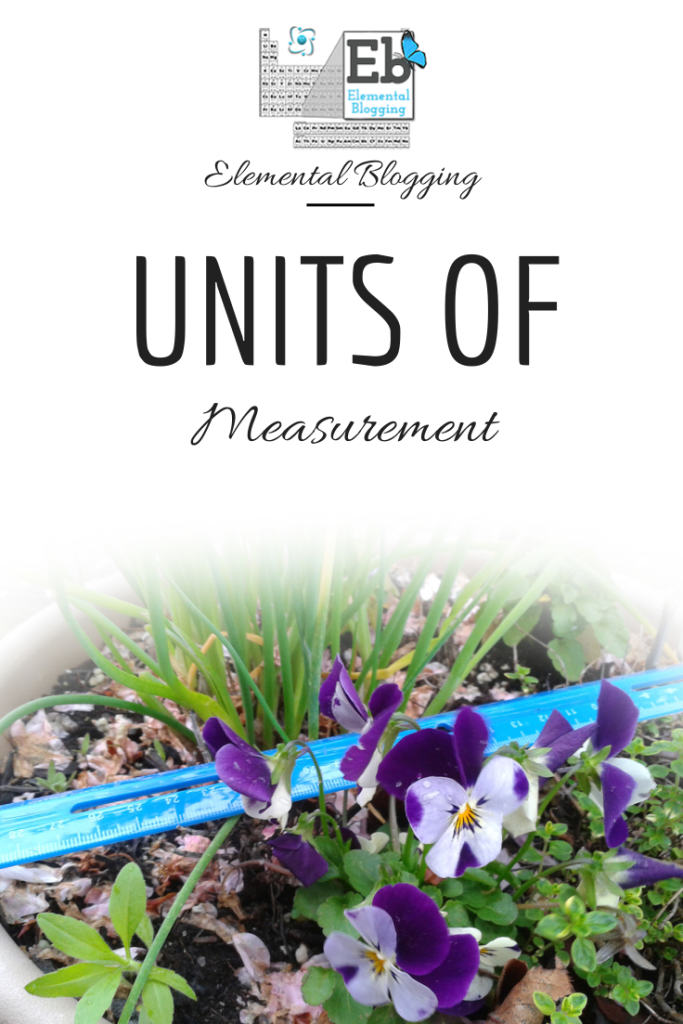 I am a bit of a stickler on units of measurement thanks to my high school chemistry teacher. She always told us that a number in chemistry meant nothing without its units, which is so true. After all, if I say that I need 2 of sugar for a recipe, do you know if I mean 2 tablespoons, 2 grams, 2 cups or 2 kilos?
I am a bit of a stickler on units of measurement thanks to my high school chemistry teacher. She always told us that a number in chemistry meant nothing without its units, which is so true. After all, if I say that I need 2 of sugar for a recipe, do you know if I mean 2 tablespoons, 2 grams, 2 cups or 2 kilos?
That’s why from the very first time I introduce measurements to my students I always emphasize the importance of not forgetting to write the units. I know from experience how key it is to lay a foundation for remembering these units of measurement early on.
Why are the units of measurement so important?
Knowing the units of measurement that correspond with a number can give you so much more information than a digit sitting there by itself. Units can:
- Help to show another person the exact amount you have;
- Assist in solving a mathematical problem, especially in chemistry, where you can follow the units to get to the answer;
- Show which measurement system the person is using (i.e. metric or standard).
In a nutshell, the unit of measurement in science serves as the supporting pillar upon which a number rests.
What are the two main systems of measurement?
There are two main systems of measurement used in today’s nations:
- The Metric System – This system is used in most of the world and it employs units like meters, grams and liters. The system is base 10 and the names are formed with prefixes. It was derived from one of the early French measuring systems.
- The Standard or Standard American Engineering (SAE) System – This system is mainly utilized in the United States and it contains units like inches, pounds and gallons. It was derived from an early English measuring system that has its roots in the Roman system of measurements.
In the US, the SAE system of units is more widely used on consumer products and in industrial manufacturing, while the metric system is more widely used in science, medicine and government. So, it’s especially important for American students to be familiar with both systems.
What about converting units between systems?
Every student should know how to convert measurements inside of their most commonly used system of measurement. By this I mean that they should be familiar with knowing how to convert grams to kilograms or ounces to pounds. Normally, these conversion factors are taught as a part of their math program. I also recommend that have your students memorize several basic conversion factors between the two systems. Here’s what every student should know:
- Pounds to Kilograms: 1 kg = 2.2 lb
- Gallons to Liters: 1 gal = 3.785 L
- Feet to Meters: 1 foot = 0.305 m
With the global flow of information that occurs these days, it is very important for students to learn these most basic conversion factors. It’s also not a bad idea for your students to learn how to convert miles to kilometers, cups to milliliters, inches to centimeters and ounces to grams.
How do you emphasize units of measurement outside of math class?
One of the key ways to stress the need for units to accompany numbers apart from math class is in the science lab. In other words, when the students record their results in an experiment, make certain that they include the units. In the beginning, you should also take the time to explain why those few letters are so necessary when they record their results. Remember that results are the specific and measurable things that occur in your experiment, so they cannot be truly understood unless the numeral is paired with a unit of measurement.
Here are two more tips for highlighting units of measurement outside of math and science.
- Call out the amount and the units when you measuring ingredients for a recipe. For example, say we need 1 cup (or 240 milliliters) of milk for this recipe, instead of we need 1 of that big one over there.
- Talk about the units of distance when going for a ride in the car or when taking a walk. You can say it’s 5 miles (or 8 kilometers) to the store and that will take us about 10 minutes to get there.
There are many situations in our everyday life into which we can weave the concept of units of measurements. Doing so, will instill in our students an importance in the units of measurements that will spill over into their scientific studies.
 Sign up below to receive weekly tips & tools for homeschool science and we'll send you a FREE copy of
Sign up below to receive weekly tips & tools for homeschool science and we'll send you a FREE copy of 
We are sticklers for including units of measurement here too. They can convert within each system, but I haven’t had them convert between systems. Thank you for mentioning and including those conversion factors. We will add them to our list of memory work. 🙂
I agree that there are many opportunities in every day life to discuss units of measure and we take the time to do so. One of our favorites is to discuss unit prices at the grocery store. We will look at the unit price, weigh our produce and then calculate the final cost based on the weight. Sometimes we try to estimate the weight as well before putting it on the scale. We also use the unit price to compare sale offers to see which is really a better deal.
What a great idea to weave in math and units in the grocery store!
Here’s the last few that I didn’t include the factors for in the post in case you want to add them to your list as well:
Miles to Kilometers: 1 mi = 1.61 km
Cups to Milliliters: 1 c = 240 mL
Inches to Centimeters: 1 in = 2.54 cm
Ounces to Grams: 1 oz = 28.3 g
Thank you! I will add them to the list as well. 🙂